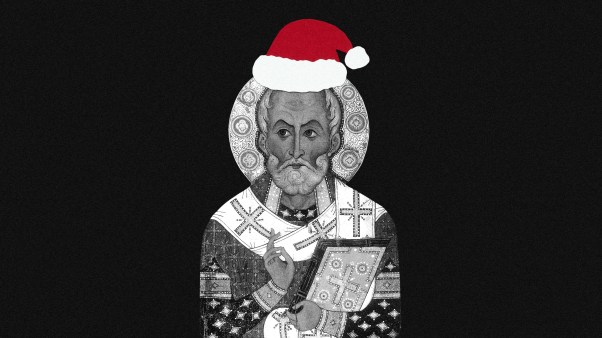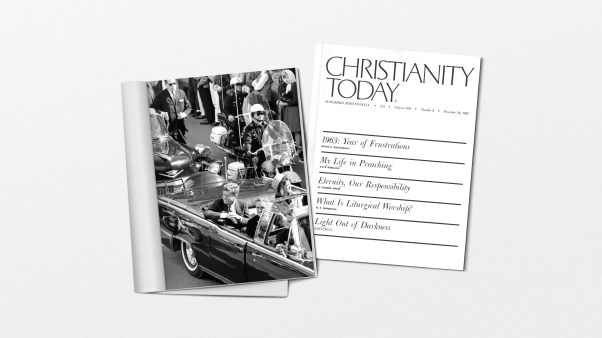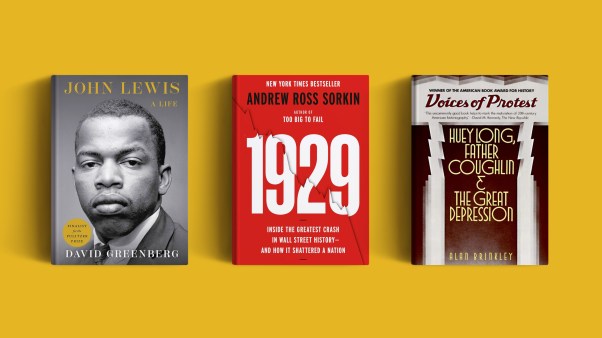Conversion is central to the Christian faith. From Jesus’ words to Nicodemus in John 3:3 telling him that one must be “born again,” to Saul’s dramatic encounter on the road to Damascus, to the many famous conversion stories that fill the pages of church history, the act of conversion of is essential to Christian life and teaching.
Rhetoric of Conversion in English Puritan Writing from Perkins to Milton, The (New Directions in Religion and Literature)
Bloomsbury Academic
282 pages
$61.89
Yet the understanding of what conversion consists of, the representations of that understanding and the means of persuading people toward it—these are far from static. Indeed, conversion came to have such a renewed emphasis within Christian religious experience during the late 17th and early 18th centuries (first in England, then in America and beyond) that this rekindling gave rise to a movement that would come to be called evangelicalism. This “conversionism” was later identified by church historian David Bebbington as one of the evangelical movement’s four characteristic elements, together known as Bebbington’s quadrilateral.
The roots of the evangelical emphasis on conversion are planted in Puritan soil. Despite the Puritans’ undeserved reputation for dry reason and dour imagination, Puritan thinkers and writers produced vivid, compelling prose (and poetry) steeped in both rich imagination and profound reasoning. The Puritans were, in fact, masters of rhetoric. But theirs was not eloquence for the sake of eloquence, something Paul warns about in 1 Corinthians 1:17 (a caution later echoed by Augustine in On Christian Teaching). There is a fine line between eloquence in service of the gospel and that which, in delighting solely in itself, drowns out the message. This is one the themes expertly teased out in The Rhetoric of Conversion in English Puritan Writing from Perkins to Milton, a new book by David Parry, lecturer in English at Exeter University.
Concealed eloquence
It seems counterintuitive, perhaps, that Christians within the Reformed tradition who hold to the doctrine of predestination would place so much emphasis on persuasive preaching. If salvation is predestined, why even bother to try to persuade anyone? But, as Parry explains, the Calvinistic view of predestination is not the same as “a deterministic fatalism that denies any role whatsoever for human agency.” Rather, the Puritan divines believed, as Parry shows, that “God uses temporal means to accomplish his eternal purposes.” Persuasive preaching and writing are just such temporal means.
It is impossible, of course, to cover nearly anything within Puritan history without addressing the complicated question of how Puritan is defined. Parry sketches out this problem and offers that, for the purposes of his analysis, Puritanism consists of both a movement not only “to protest against perceived external corruption” but also one “focused on the internal spiritual condition of individuals.” In this respect, the persuasive powers of these Puritan preachers and writers were, Parry shows, concerned not only with conversion but with ongoing sanctification, too.
While the Puritans are famous for their “plain style” of preaching and writing, Parry demonstrates that this approach “was not an abandonment of eloquence,” but rather, and more interestingly, “a concealing of eloquence.” Such a rhetorical strategy prioritizes “the transparent communication of truth over the ostentatious display of learning and eloquence.” Thus, the book explores the relationship between rhetoric and what was termed at that time “practical divinity,” meaning pastoral teaching and care that attempts to help ordinary people apply doctrine and theology in their everyday lives, first in being converted, and then in living holy lives. For Puritan divines seeking to so persuade those under their influence and care, that meant using language in ways that would transform a person’s reason, imagination, and will.
Though underappreciated today, this intricate relationship between rhetoric and theology is one about which our Puritan forebears have much to teach us. To examine the persuasive appeal of a range of rhetorical strategies, Parry considers closely the works of a small but representative group of Puritans. The group includes those well-known to most readers—Richard Baxter, John Bunyan, John Milton—as well as the lesser known but equally exemplary preachers Richard Sibbes and William Perkins.
Those passingly familiar with writers like Bunyan and Milton—both of whom despite producing massive bodies of didactic treatises and essays are best known for their imaginative works—might wonder how such a commitment to truth over style applies to them. Parry answers this question insightfully and delightfully.
A further question is not just how, but why, imaginative works of literature can be so theologically, as well as aesthetically, persuasive. Parry explains, “It is also the pastoral impulse to persuade their readers into saving truth that leads some Puritan writers to deploy the somewhat undercover modes of imaginative fiction.” Indeed, it is one of the great ironies of literary history that Puritan writers—in their suspicion of fiction—wrote instead allegories, epics, and spiritual autobiographies that laid the groundwork for the most significant and influential literary genre of the modern era: the novel.
Milton is the least “Puritan” of the Puritans covered in the book, or perhaps the most theologically controversial one. But Parry explains that despite Milton’s evolving and at times heterodox positions, his work operates with “a rhetorical enterprise akin to that of Puritan practical divinity.” In other words, Milton attempts in his writing—and his literary masterpiece Paradise Lost is no exception—to woo his readers “to conversion, assurance of salvation, and godly living.”
In the chapter on Milton, as well as throughout the book, Parry shines in literary and cultural criticism, as well as ethnography, particularly when he describes conversion as the central resolution to Paradise Lost. The last books of this epic retelling of the fall of humankind, Parry shows, “dramatize Adam and Eve’s repentance after their fall in terms that are in significant continuity with Puritan understandings of conversion and regeneration.”
Not surprisingly, it is John Bunyan who best illustrates the way in which language functions to transform all of our human faculties—reason, will, and affection. Or, in the words of Great-heart in Part Two of The Pilgrim’s Progress, to “perswade sinners to Repentance” and “to turn Men, Women and Children, from darkness to light, and from the power of Satan to God.”
Bunyan understood such persuasion, Parry says, to be part of his own vocation as a preacher. Moreover, Bunyan’s use of language throughout his writing reflects the evocative (and foundational) Puritan idea that “it is new language that gives access to the new world of the redeemed.” It is the language employed in the rhetoric of conversion so skillfully wrought by these Puritans that can “reinscribe and reorient the mind, heart, and will of its audience, bringing the ‘divided self’ of the hearer or reader to occupy a new, regenerate identity.” In their sermons and other works, Puritans appealed to both the reason and the imagination of their audience in order to “reshape their cosmic imaginaries,” Parry continues, invoking the ideas of Peter Berger and Charles Taylor to explain the ways in which the “imaginative mode of rhetoric … bypasses the cognitive defenses of readers in order to reinscribe their imaginations from within.”
Rekindling the fires of imagination
I’m particularly interested in this aspect of Parry’s book because of my own current writing project on “the evangelical imagination.” For many, such a phrase immediately invokes images of hobbits and talking fauns and bad Christian movies. But the fact is that “imagination,” and even the “evangelical imagination,” forms a well far, far deeper than what first floats to the surface upon thinking about what imagination is, what it means, and how it is represented. Our collective imaginary (the “well”) is fed from many hidden springs. This is something the Puritans knew profoundly and something Christians today understand too little.
Readers of Christianity Today should take particular interest in the fact that, as Parry says early in the book, the subjects of religious conversion and its representations are experiencing renewed interest from scholars of this historical and literary period. The Rhetoric of Conversion is one such example. Part of a series of books on New Directions in Religion and Literature, featuring prominent scholars in the field from a variety of theoretical and religious perspectives, The Rhetoric of Conversion is comprehensive in its source material (both primary and secondary) and makes its own significant contribution to this period of literary history.
At the same time, the book is readable and engaging to a wider audience. It will benefit a range of general readers interested in literature, church history, and theology. Most importantly, for those who have ears to hear, it will help in the ongoing rekindling of the fires of imagination that have always carried the church.
Karen Swallow Prior is research professor of English and Christianity and culture at Southeastern Baptist Theological Seminary. She is the author of On Reading Well: Finding the Good Life Through Great Books.










